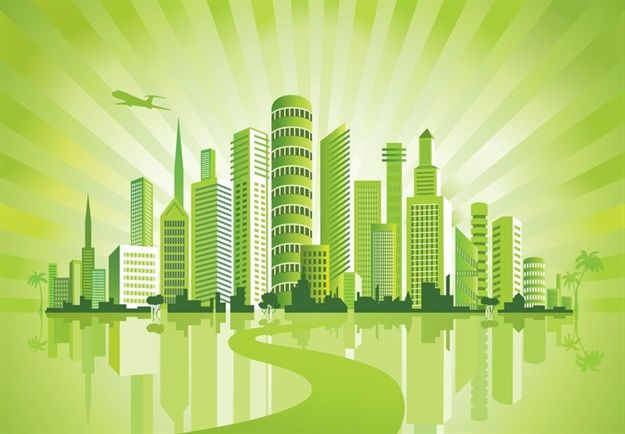Green Building Innovations Shaping the Future of Indian Real Estate
Read latest blogs and articles from Housystan

The Information mentioned here was last updated on:
11/12/2025Green Building Innovations Shaping the Future of Indian Real Estate
India's real estate sector is undergoing a significant transformation, driven primarily by the increasing demand for sustainable and green building solutions. As environmental concerns gain traction, both developers and consumers are becoming more conscious of ecological impacts. Green building innovations not only promise a smaller carbon footprint but also provide commercial advantages like reduced operational costs and enhanced market value. This article explores the key green building trends that are shaping the future of Indian real estate.
The Rise of Sustainable Architecture
- Verified Tenants/Buyers
- Unlimited Property Listing
- Zero subscription/charges fee
Sustainable architecture is no longer a niche concept in India. Architects and developers are embracing eco-friendly designs that prioritize the efficient usage of resources. Here are some defining features:
- Use of Eco-friendly Materials: Materials like bamboo, recycled steel, and fly ash bricks are becoming popular due to their lower environmental impact.
- Energy-efficient Designs: Buildings are designed to maximize natural lighting and ventilation, reducing dependence on artificial lighting and air conditioning.
- Water Conservation Systems: Advanced plumbing systems and rainwater harvesting techniques are integral, ensuring optimal water usage.
The Role of Technology in Green Buildings
Technological advancements have significantly impacted the development of green buildings. These innovations not only make buildings more sustainable but also improve their overall functionality.
- Smart Energy Management Systems: These systems monitor and optimize energy usage by analyzing consumption patterns and automatically adjusting systems to improve efficiency.
- Building Information Modeling (BIM): This digital tool allows for precise planning and simulation, reducing construction waste and enhancing the building's energy performance.
- IoT Integration: The Internet of Things (IoT) connects various building systems, such as lighting, heating, and security, ensuring they work harmoniously to conserve energy and resources.
Government Policies and Green Certifications
The Indian government has introduced several policies and incentives to encourage green building practices. This regulatory support plays a crucial role in promoting sustainable real estate development.
- Incentives and Subsidies: Tax benefits, lower interest loans, and other financial incentives are available for green-certified projects.
- Green Rating Systems: Organizations like the Indian Green Building Council (IGBC) and LEED India provide certifications to buildings that meet specific sustainability criteria. These certifications enhance the marketability and credibility of real estate projects.
- Development Regulations: Zoning laws and building codes are being updated to include sustainability requirements, urging developers to prioritize green initiatives.
Benefits of Green Buildings
The push towards green buildings is not just a trend; it offers tangible benefits for both developers and occupants.
- Cost Savings: Despite higher initial investments, green buildings reduce utility bills through lower energy and water consumption, leading to significant cost savings over time.
- Healthier Living Environments: Improved indoor air quality, better thermal comfort, and reduced exposure to pollutants contribute to healthier living and workspaces.
- Increased Property Value: Green buildings tend to have higher market value and attract premium tenants due to their sustainability features.
Notable Green Building Projects in India
India is home to several noteworthy green building projects that serve as benchmarks for sustainable architecture.
- CII-Sohrabji Godrej Green Business Centre, Hyderabad: This building features energy-efficient systems and high-performance architecture aimed at reducing energy consumption.
- Indira Paryavaran Bhavan, Delhi: This government building is carbon-neutral and blends traditional Indian architecture with modern green technologies.
- ITC Green Centre, Gurgaon: Renowned for its sustainable design, the center uses recycled materials and employs effective water and energy management systems.
Future Trends in Green Real Estate
As the green building movement gathers momentum, several trends are expected to define the future of Indian real estate.
- Vertical Gardens and Green Roofs: These innovations address urban space constraints and enhance air quality while providing cooling effects.
- Net-zero Buildings: These buildings generate as much energy as they consume, minimizing environmental impact.
- Circular Economy Practices: Embracing recycling and waste reduction at all stages of construction and operation, these practices promote sustainability and reduce landfill contribution.
Challenges and Opportunities
The shift towards green buildings is not without challenges, but they also offer significant opportunities for innovation and growth.
- Challenges:
- Higher Initial Costs: The upfront investment in sustainable technologies and materials can be a barrier for some developers.
- Technical Expertise: There is a need for skilled professionals who understand and can implement green building technologies effectively.
- Opportunities:
- Growing Demand: With increasing awareness of environmental issues, there is a rising demand from consumers for sustainable housing options.
- Innovation Potential: The dynamic nature of green building technologies provides vast opportunities for research and development.
Green Real Estate and Urbanization
As India continues to urbanize rapidly, green real estate holds the potential to address the environmental challenges posed by urban expansion. The integration of green spaces and sustainable practices within urban planning can lead to the development of smarter, more livable cities.
- Integration with Smart Cities: Green buildings complement the smart city initiative by promoting sustainable urban growth and efficient resource use.
- Community Engagement: Green developments often incorporate community spaces that encourage social interactions and active lifestyles, enhancing the overall quality of urban life.
In summary, Green building innovations are reshaping the landscape of Indian real estate by infusing sustainability into architecture, design, and construction practices. With government support, technological advancements, and growing consumer awareness, green buildings are set to become a cornerstone of India's real estate future. As the demand for sustainable solutions grows, the real estate market might not just adapt to these innovations but potentially thrive by embracing them fully. The transition to all that is green is not just an economic imperative but arguably a societal one—guaranteeing progress with sustainability intertwined.